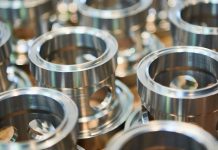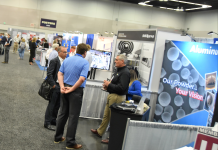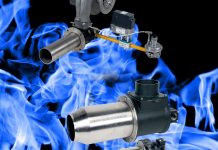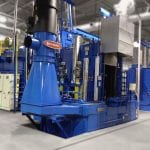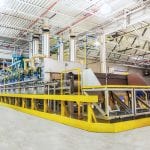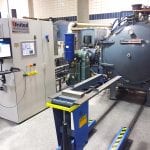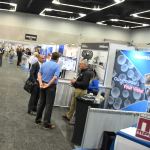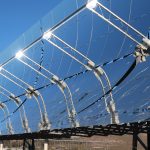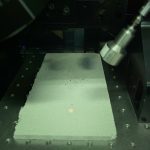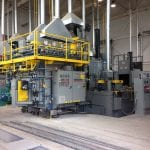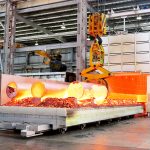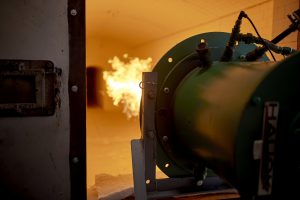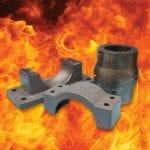Due to its ability to adapt to a more environmentally conscious industry, vacuum heat treating has become a linchpin to thermal processing across many sectors.
For the past 25 years, ECM USA has been supplying vacuum heat-treating furnaces and providing leading-edge technology for all industries needing its services, especially for automotive and aerospace.
“Our philosophy is to provide advanced turn-key technology, and that includes environmentally conscious equipment and eco-friendly solutions,” said ECM USA General Manager Dennis Beauchesne. “We offer several different products to address these requirements to keep our customers on the leading-edge. It’s also very important for us to provide equipment that’s maintainable throughout its lifespan.”
Broad range of equipment
The types of equipment offered by ECM USA includes vacuum heat-treatment furnaces, vacuum carburizing, and high-pressure gas quenching up to 20 bar in a cold chamber, according to Beauchesne.
“We have typically supplied large systems that are for continuous batch operation,” he said. “Our systems utilize either a tunnel or a vacuum transfer module that bring loads from carburizing cells to gas quench or oil quench cells, and then they exit into external automation with washing equipment for oil-quenched parts, as well as tempering or any other post operations like cryogenics, cooling, or loading-unloading mechanisms.”
ECM USA’s furnace systems have continuous batch operations that come in fairly standard modules that can be customized based on a customer’s needs, according to Beauchesne.
“They’re individualized, basically set-up for the specific building layout,” he said. “Whether you need something long and lean or something rectangular, we can set it up in different fashions. We also offer a complete line of robotics operations for loading and unloading the heat-treat fixtures, whether it’s CFC or alloy.”
Automation and robotics are a recent development for ECM USA, and Beauchesne said it has become a big deal for customers with a 1-2-3 furnace or a batch furnace system.
“They seem to be going toward robotics because of the reduction in availability of personnel in the marketplace,” he said. “As their prices are being reduced, robotics has become more mainstream. We’re seeing more and more applications for them and more requests for robotics integration into heat-treat systems, so that’s what we’re offering in addition to providing our leading-edge technology so heat treaters obtain a higher quality product.”
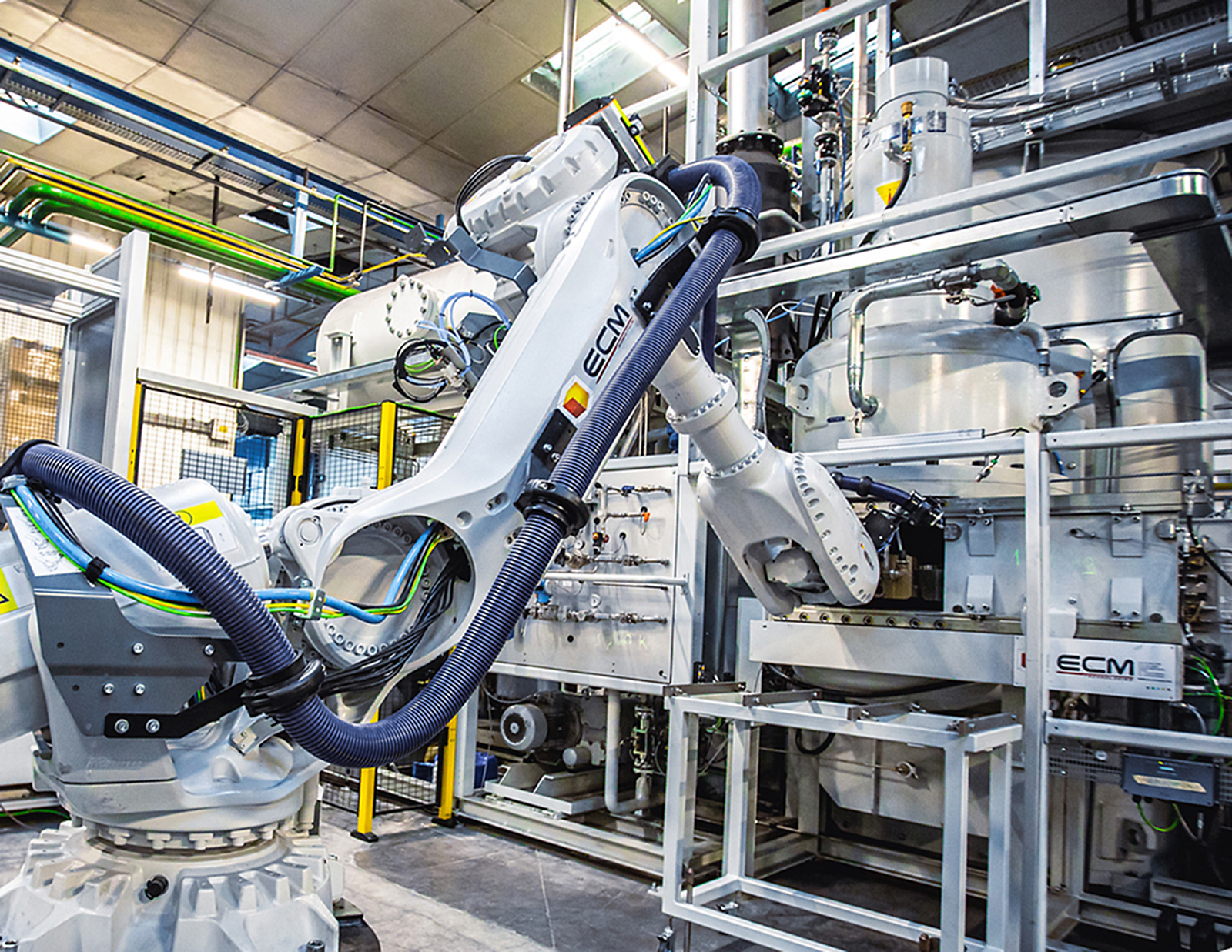
Eco-friendly
Part of ECM USA’s operating procedure has not only been to offer state-of-the-art equipment, but also to make sure that equipment meets the demand to be eco-friendly, according to Beauchesne.
“We feel like we’ve been way ahead of the trend, because, in Europe, it’s been a big thing,” he said. “We have countries that are spending money to buy capital equipment with companies to reduce their carbon footprint. We’re seeing it more now in Mexico, too. And there will be carbon taxes, we believe, in Canada coming up soon. I think it’s just a matter of time before the U.S. will follow suit. It’s starting to be something that any European-owned company in North America is focusing on today.”
One of the more fascinating ways ECM USA is evolving to attract the next generation of workers is by shaking up the status quo of not just how equipment functions, but how it looks, according to Beauchesne.
“With vacuum carburizing furnace technology, everything is water cooled, and the furnaces are painted white,” he said. “It’s a very different look for the heat-treat operation, and it’s more attractive for, let’s say, the newer generation coming into the work environment.”
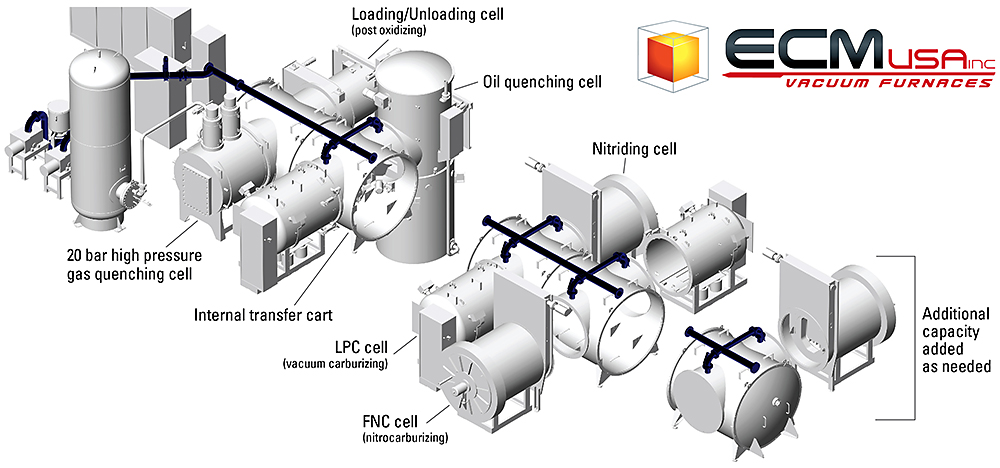
Synergy centers
As ECM-USA thinks outside the box to bring more workers into the industry at large, the company also has developed innovative ways to help its customers, according to Beauchesne.
“We’re one of the few companies in the world that has an in-house testing lab or Synergy Center,” he said. “We’ve also developed Synergy Centers within ECM around the world.”
These synergy centers are available for demonstrating ECM furnace systems as well as dimensional CMM systems. The centers also contain a full laboratory for metallurgical analysis for part quality and testing, according to Beauchesne.
“Customers come to us with distortion, metallurgical, and heat-treating needs with requirements that are very detailed,” he said. “That’s especially important with what we’re seeing in the current market with EV electric vehicles and NVH requests for a much finer tooth and quieter gear. Distortion plays a factor in that, and with our equipment, distortion is key with gas quenching and low-pressure carburizing. We can prove efficiency and suggest process improvements in the Synergy Centers. We have one here in Wisconsin, and one in Grenoble, France, that lets us step up to the challenge with customers.”
These services are available for whatever the customer may need, whether it’s part of a project or part of a test before a project begins, according to Beauchesne.
“Whichever way they want to do it — we can do the CMM analysis and testing here and share that data,” he said. “Of course, we also like to use some of that data for presentations and whitepapers to promote ECM technology, if permission is given by the customer. We can do this type of testing or their specified heat-treat process and send it back so they can do the analysis. There are many different ways.”
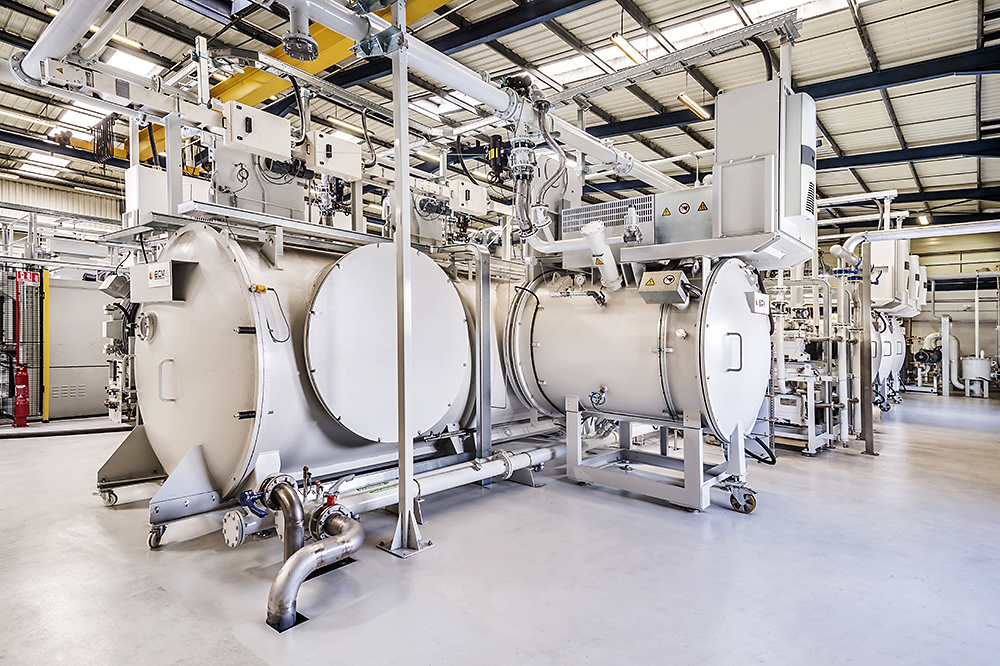
25th anniversary in the U.S.
ECM USA is a French-owned company that is a subsidiary of ECM Technologies, which has been in business since the 1920s. It created its first vacuum furnace in 1964, perfecting its low-pressure vacuum carburizing method in the 1990s. It was around this time when ECM Technologies decided to offer its expertise in the U.S. Through a partnership with Midwest Thermal-Vac, a heat treater in Kenosha, Wisconsin, a joint venture was formed, and ECM USA was born.
ECM USA has been a big influence on many industries over its history, but the company’s expertise has had quite an effect on the automotive sector, according to Beauchesne. This year, during the company’s 25th anniversary of doing business in the U.S., it can boast the fact that it has sold more than 220 vacuum carburizing cells and more than 45 systems in that short time. A point of pride for Beauchesne during that time has been how much ECM USA has influenced the automotive industry.
“In 2001, our equipment processed the Corvette axle gears, and it was a great pleasure to know that our process was part of that car,” he said. “Now, 25 years later, I think you can go on any street or any parking garage and find a car that’s been vacuum carburized and has vacuum carburized gears in it. There are many brands, many programs, throughout the world now that use vacuum carburizing through the ECM systems.”
Looking to the future
As ECM USA moves forward, Beauchesne said the company will continue to expand and perfect its eco-friendly processes.
“We see ourselves leading that technology to bring heat treaters into a clean environment, an eco-friendly environment, with equipment that will reduce their carbon footprint by over 90 percent and decrease their energy consumption up to 40 percent,” he said. “Those are some factors that we know are happening today, and we’d like to keep bringing that technology to everybody — heat treaters, captive and heat-treat shops.”
As automation becomes more in demand, Beauchesne said ECM USA will be there to make those transitions as smooth as possible for its customers.
“We want to add more integration into the entire production line of the heat-treat operation — not just at the back of the plant operation anymore, but we’re becoming much more involved with streamlining the machining operation,” he said. “And with that, we want to make sure that the carbon footprint is lowered while maintaining the high-quality heat treating expected and achieved from our equipment. That’s what we want to do.”
MORE INFO www.ecm-usa.com










